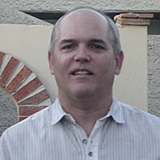
|  |  |  News Around the Republic of Mexico News Around the Republic of Mexico  
Mexico's 2010 Independence & Revolution Festivities
 Allan Wall - PVNN Allan Wall - PVNN
September 18, 2010

 |  | The entire calendar year of 2010 is considered a Bicentennial/Centennial year. There are over 700 activities being held to commemorate this dual anniversary. |  |  |  |
At last, Mexico’s much-awaited Bicentennial Independence Day ceremonies have been held, and they were certainly spectacular.

The entire calendar year of 2010 is considered a Bicentennial/Centennial year, the Bicentennial of Independence and the Centennial of the Revolution. There are over 700 activities being held to commemorate this dual anniversary.

The actual Independence Day celebrations of course, had to be big. And they were.

The traditional Mexican custom of the Grito (the “shout” or “cry”) takes place on the night of September 15th. It’s an historical re-enactment of sorts, re-enacting the actions of Miguel Hidalgo, considered the father of Mexico, in the town of Dolores in 1810. It was there that Hidalgo, a Catholic priest, gathered the people in front of the church on the plaza, where he gave a speech, rang the bell, and called the people to action. The town’s name was later expanded to Dolores Hidalgo in Hidalgo’s honor.

This action, 200 years ago, initiated the public movement that was eventually transformed into the Mexican Independence Movement. Although Hidalgo was executed in 1811, Mexican independence was finally achieved in 1821. In memory of Hidalgo’s action, the Mexican Grito custom re-enacts it each year.

So, in public plazas large and small throughout Mexico, the Grito is held each night of September 15th. The mayor (or governor or president) comes out on the balcony where he rings a bell, waves the flag, and shouts a succession of Vivas –(Viva being the Spanish expression for “Long Live”).

In the standard Grito, the mayor (or governor or president) shouts “Long Live the heroes who gave us the nation and liberty” followed by “Viva Hidalgo”, and Vivas for other Independence heroes. The leader may add his own Viva but of course end with “¡Viva México!” several times. Then he rings the bell and the national anthem is sung.

The biggest Grito each year is the one in Mexico City. It’s held in the Zocalo, the main plaza of Mexico City. There the president of Mexico comes out on the balcony of the National Palace and leads the Grito to the crowd assembled beneath.

In this year’s Bicentennial Grito, President Calderon added some timely shouts: “¡Viva el Bicentenario de la Independencia!” and “Viva el Centenario de la..." completing of course with the Viva México three times.

Afterwards there was a massive and spectacular fireworks display.

For a short video of the Bicentennial Grito, click here.

President Calderon was quite busy on the 15th and 16th. Besides leading the Grito on the night of the 15th in Mexico City, he went to Dolores Hidalgo to give the Grito there.

On the 16th of September, there is a customary Independence Day Parade. In Mexico City this parade (which passes through the Zocalo to be reviewed by the president) highlights the Mexican military.

This year’s Bicentennial Parade was a big one. It’s estimated that 450,000 spectators attended and over 18,000 participants marched.

The parade kicked off with 27 paratroopers (15 from the Army, 12 from the Navy) parachuting down to ground level in Mexico City. There was also a flyover of Mexican Air Force planes.

This year, 575 military personnel (from 16 foreign countries) were invited to march. In order for them to participate, President Calderon had to request permission from the Mexican Senate, and the Senate gave its consent.

There were military contingents from 16 other countries. Before marching in the actual parade, the foreign troops practiced with the Mexican troops on Mexico’s famous Campo Militar Numero Uno parade ground. As a veteran myself, I remember how it was an interesting experience to meet and work with military personnel from other countries, and I’d be willing to bet that the foreign troops enjoyed their visit to Mexico.

Four of the participating nations , Colombia, Venezuela, Argentina and Chile also have bicentennials this year. (Chile’s was the 18th, 2 days after Mexico’s). Other participating Latin American countries were Guatemala, El Salvador, Nicaragua and Peru. North American neighbors Canada and the U.S. sent contingents, as did China and Russia. France and Germany sent soldiers. And so did Spain, the country from which Mexico won its independence. Spain, in fact, has participated in Mexico’s Bicentennial in several ways.

Furthermore, the Mexican Federal Police made their first ever participation in the Bicentennial Independence Day parade, marching with their weaponry and vehicles. That’s altogether appropriate, given the heavy participation of the Federal Police in the ongoing war on the drug cartels.

In all, over 18,000 military and security personnel marched in the parade. (For photographs of the parade, click here).

All in all, the Bicentennial Mexican Independence Day festivities on the 15th and 16th proceeded according to plan and were quite impressive.

¡Viva México!
 Allan Wall is an American citizen who has been teaching English in Mexico since 1991, and writing articles about various aspects of Mexico and Mexican society for the past decade. Some of these articles are about Mexico's political scene, history and culture, tourism, and Mexican emigration as viewed from south of the border, which you can read on his website at AllanWall.net. Allan Wall is an American citizen who has been teaching English in Mexico since 1991, and writing articles about various aspects of Mexico and Mexican society for the past decade. Some of these articles are about Mexico's political scene, history and culture, tourism, and Mexican emigration as viewed from south of the border, which you can read on his website at AllanWall.net.

Click HERE for more articles by Allan Wall.
|

 |
|  |



